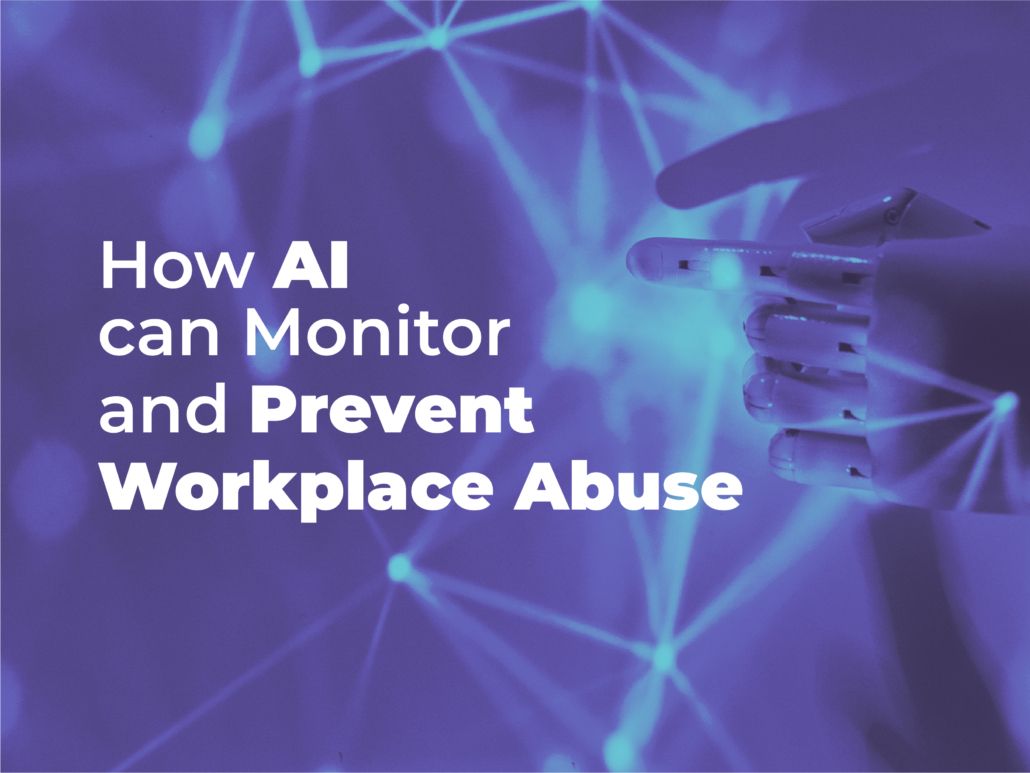AI workplace monitoring

What is Abuse?
Abuse of any form or nature is an act of unjustified oppression, blaming, or dehumanization using manipulative, discriminatory, or bullying behavior that may cause the recipient profound emotional distress that may have life-altering negative manifestations.
Some of the common forms of abuse include Ethnicity Abuse, Community Abuse, Sexual Minorities Abuse, Nationalism Abuse, Women Abuse, Threat Abuse, Human Trafficking Abuse, Human Organ Trafficking Abuse, Drugs Trafficking Abuse, Arms Trafficking Abuse, External Contact Abuse, Generic Abuse, Personal Attack Abuse, Profanity Abuse, and Sexual Advance Abuse.
Why is Workplace Abuse on the rise?
In the digital age, abuse has taken on a vicious contactless form. Already challenging to deal with in physical spaces due to victim shame and guilt, abuse dished out in the digital spaces through emails, texts, video transcripts, customer inquiries, chats can become almost impossible to detect. This leaves in its wake a trail of victims of cyberbullying, gossip-mongering, scapegoating, inappropriate sexual advances, and so on, completely defenseless, their confidences flagging and self-doubt creeping into their performance.
The Covid-19 pandemic, by far the most expansive human tragedy ever faced, has worsened the situation by forcing the world’s workforce to move into their homes and carry with them the toxic corporate culture, only now with the added challenge of no physical redressal department to appeal to.
A lot of information gets lost in translation in a remote work setting. When speaking in person, a listener perceives just 7% of a message through spoken words only, according to research from body language expert Albert Mehrabian; 38% of a message’s impact comes from vocal cues, including tone, and the remaining 55% is nonverbal altogether.
The Work From Home mode has exposed employees to many more stressors than usual — the disappearing line between work and personal life, the unwritten law about “no leaves because you’re at home anyway”, fear of salary cuts and no appraisals, increased pressure to put in your 100% to retain jobs and so on. This alone has had a telling impact on the mental health of employees worldwide. Add to that the worsening of unregulated organizational culture that is now escaping through side chats on zoom meetings, text messages of undecipherable tone, passing gossip via Whatsapp groups, and so on.
If conduct goes unmonitored and unregulated, there will most certainly be an erosion of individual self-esteem and ultimately employee performances. It is a common occurrence that employees facing cyberbullying and abuse reduce work output, and let their frustrations get the better of them in their interactions with customers — costing the company business and reputational loss.
How can AI and NLP help in abuse detection?
Organizations all over the world are emphasizing improving their brand presence, customer-focused initiatives, and business compliance. Almost all companies strictly monitor their channels and ensure that no malpractices or lousy conduct occur. In the long run, it reaps monetary benefits as well. Moreover, it helps organizations to avoid getting penalized for regulatory issues and compliance practices. With a good brand image in the industry market, businesses can successfully increase their customer base, partnerships, and investments.
With the ongoing research and development in technology, many difficult tasks are now easily executed. Natural Learning Processing is one of the best methodologies for abuse detection since it is known as the ability of computer programs to understand human language. Businesses can use this technology to read all the texts from conversations, chats, emails, and social media, while simultaneously identifying abusive intent and words. The abuse detection process works on the foundation of training the computer program to predict what an abusive text is and how to differentiate it from normal text.
An AI-empowered abuse detection software can be especially useful in the post-pandemic situation by streamlining abuse monitoring across all major WFH platforms such as Zoom, Slack, and Microsoft Team for complete peace of mind and greater performance confidence
